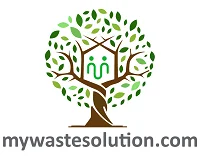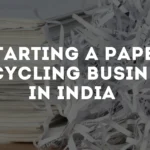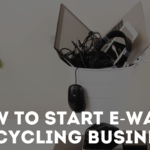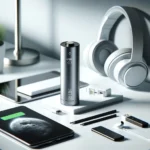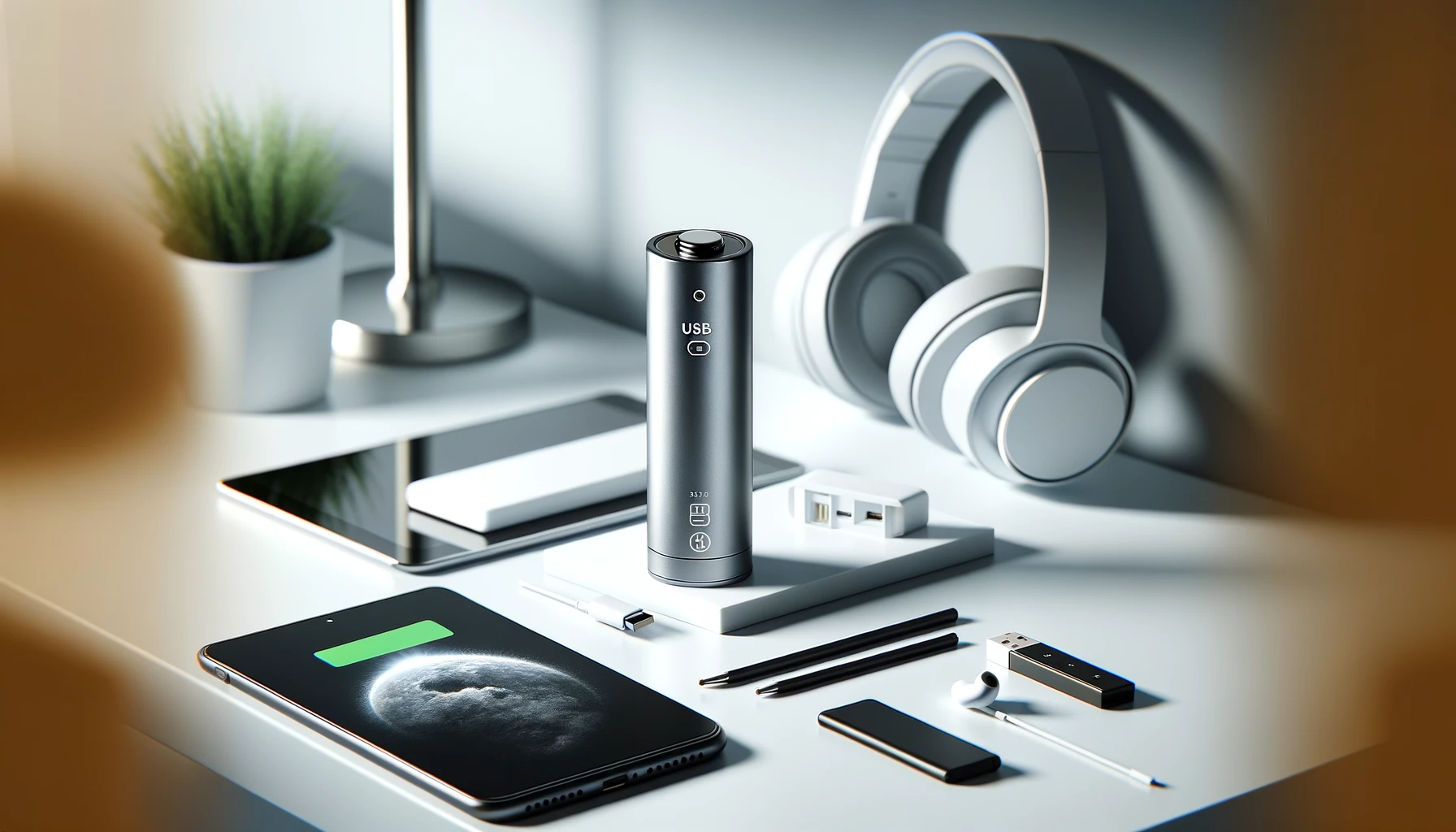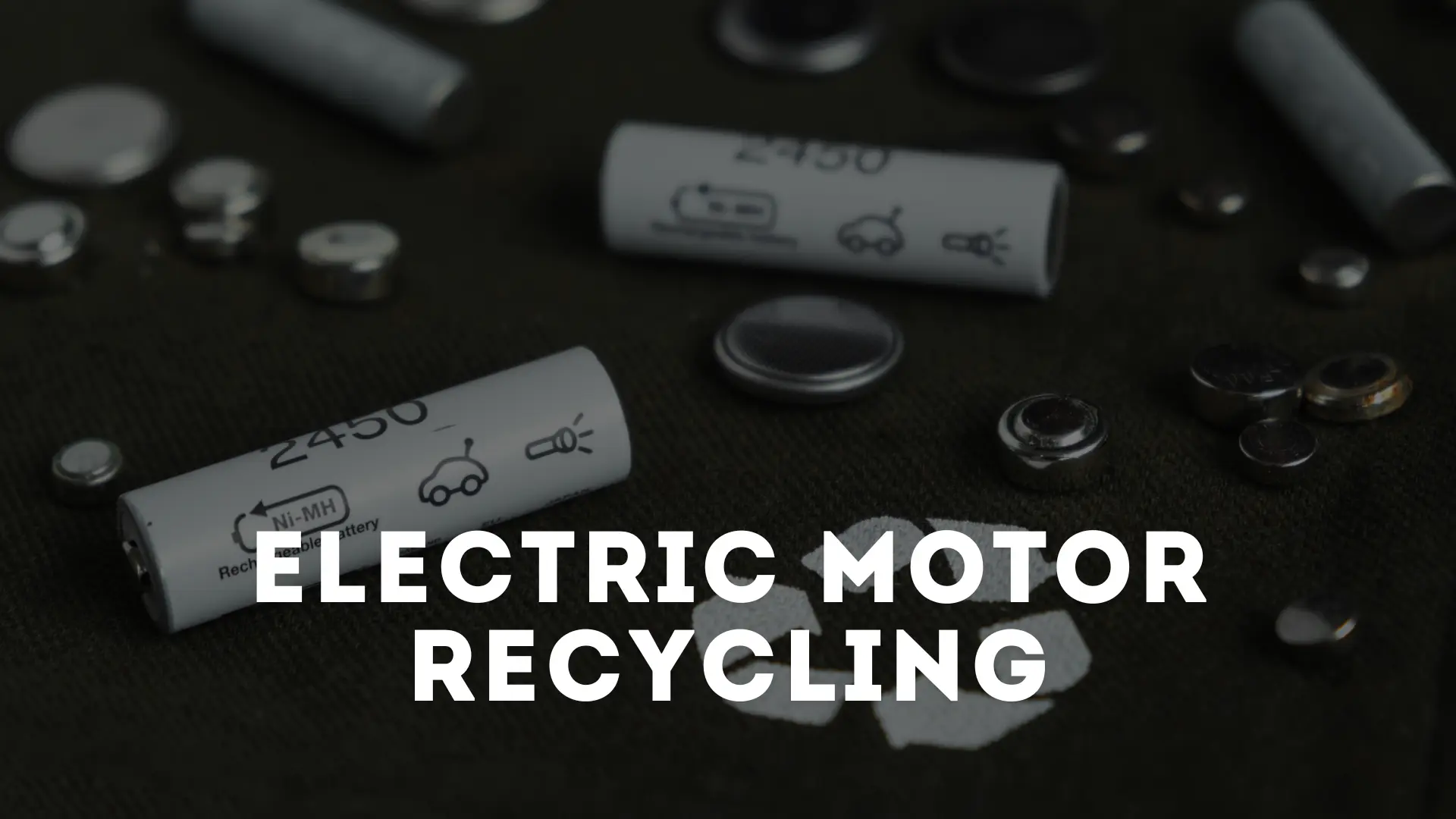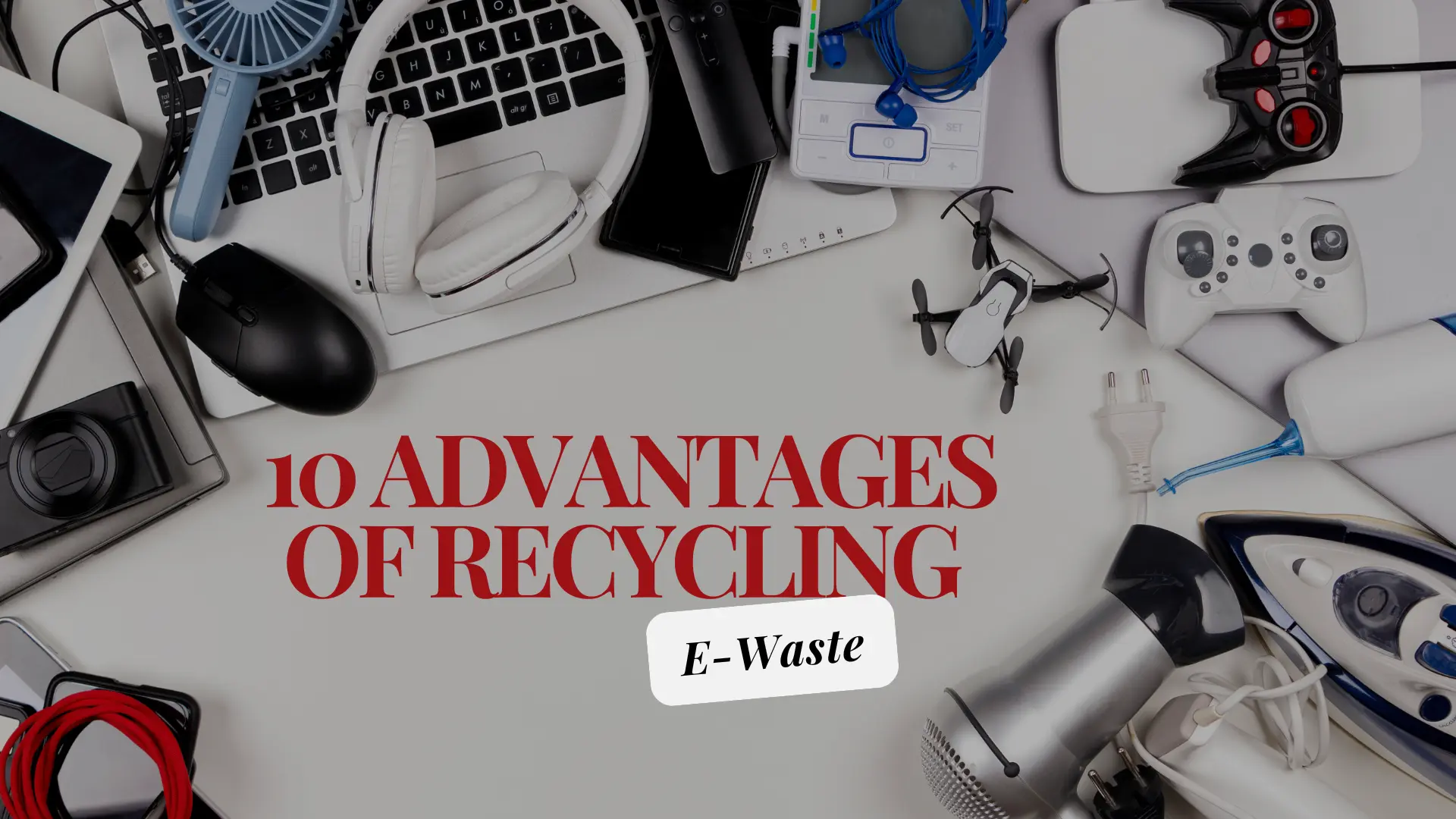In today’s tech-driven world, the use of gadgets and devices is skyrocketing, leading to an accumulation of electronic waste. Each new smartphone, laptop, and larger items like refrigerators and televisions contribute to this growing issue. These types of e-waste not only contain hazardous materials that can harm the environment, but also valuable resources for recycling. Understanding the impact of e-waste is essential for promoting responsible disposal and conserving our planet’s resources.
Electronic waste is generated by individuals, businesses, and manufacturers, with India producing approximately two million tonnes annually, ranking fifth globally behind the US, China, Japan, and Germany. Alarmingly, only about 30% of cobalt, a crucial material for batteries in these devices, is extracted from discarded electronics due to inadequate recovery techniques, as noted in a United Nations report.
Despite having 178 registered recyclers, many are ineffective, often storing types of e-waste in hazardous conditions or lacking proper processing capabilities, according to the Union Ministry of Environment. To address this, the Ministry of Electronics and Information Technology has launched an awareness program to educate the public on recycling and promote eco-friendly disposal methods.
Definitions of electronic waste vary by jurisdiction; the European Union classifies it as any discarded electrical or electronic equipment, while in India, the E-Waste (Management) Rules of 2016 define it as any equipment discarded by consumers or rejected during manufacturing and repair processes.
In this blog, we will explore the various types of electronic waste and their sources and discuss how we can effectively manage these materials in our daily lives!
Types of E-Waste
In India, the E-Waste (Management) Rules, 2016 classify electrical and electronic equipment (EEE) into two main groups:
- Information, Technology, and Communication Waste (ITEW)
- Consumer Electrical and Electronic Waste (CEEW)
Now, let’s explore the different forms of electronic waste within these classifications. These include some of the most commonly used devices that frequently become discarded materials. Understanding these categories is crucial for recognizing the importance of responsible disposal and recycling practices.
1. E-Waste from Computer Monitors and TVs
The era of bulky CRT (Cathode Ray Tube) displays is fading, with these older televisions and computer monitors becoming increasingly rare. Today, types of e-waste like CRTs, LCDs, and plasma screens are classified as hazardous waste, posing significant environmental risks if not disposed of or recycled properly. CRTs, in particular, are outdated technology that can retain high voltage charges, making them potentially unsafe.
As technology advances, the turnover of older products accelerates. Flat-screen TVs and computer displays are flooding the market, significantly increasing electronic waste. Unfortunately, many consumers improperly dispose of these outdated devices instead of recycling them, with televisions and monitors accounting for a substantial percentage of discarded materials.
Many people remain unaware of the harmful effects that discarded TVs and displays can have on the environment and human health. While the industry standard for LED television lifespan is about 100,000 hours (roughly 10 years), consumers often assume their devices will last that long. When upgrading, it’s crucial to prioritize responsible recycling to minimize the impact of our used electronics on the planet.
Fig: Computer Monitor and Television e-waste
Environmental Concern
Types of e-waste in televisions and computer monitors are highly toxic to the environment. These devices contain materials such as glass, heavy metals (including lead and cadmium), and plastics, which pose significant dangers in landfills. Toxic substances like lead, mercury, and cadmium can harm both human well-being and wildlife.
Lead is particularly concerning, comprising about 6% of old computers, with a low recovery efficiency of only 5%. CRTs (Cathode Ray Tubes) can contain up to 8 pounds of this hazardous material, negatively affecting human organs and disrupting bodily functions. Cadmium can cause irreversible effects on health, while mercury, though only 0.1% of a monitor’s weight, can contaminate water sources if improperly disposed of.
Throwing monitors or televisions in the trash releases toxic chemicals into the environment. Proper disposal or recovery is crucial, as heavy metals from electronic waste can have dire consequences for both health and ecosystems. Reusing screens is an eco-friendly choice, making responsible disposal essential for a healthier future for all.
Recycling Methods
CRTs (Cathode Ray Tubes) in old televisions and computer monitors contain high levels of toxins like lead, necessitating a specialized recycling process. Here are key methods for recycling these components:
- Monitor Body and Cathode Separation: The outer shell of the monitor is removed to access the CRT, which is then processed along with other electronic waste.
- Size Reduction: CRT tubes and screens are shredded into small pieces, and glass dust is extracted.
- Metal Removal: Iron and steel components are separated using magnets.
- Washing: Remaining glass fragments are cleaned to remove oxides, phosphors, and dust.
- Sorting: Leaded glass is separated from unleaded glass. The leaded material is sent to a lead smelter for repurposing into new products, such as CRTs, batteries, and x-ray shields.
By employing these methods, we can effectively recycle televisions and computer monitors, significantly minimizing their environmental impact.
E-Waste Minimisation Route
Now, let’s explore how we can contribute to responsible electronic waste recycling instead of adding to the problem. Here are several effective ways to recycle old computer monitors and televisions:
- Donation: If your equipment is still functional, consider donating it to organizations like the World Computer Exchange or the National Cristina Foundation. Community groups may also accept items for repair and redistribution to schools and local organizations.
- Recyclers: Seek out nearby recyclers that specialize in responsible electronic waste processing. Choosing a reputable facility ensures safe handling of hazardous materials.
- Avoiding Landfill: Remember, CRTs (Cathode Ray Tubes) contain toxic heavy metals harmful to the environment. Never throw them in the trash.
- Manufacturer Take-Back Programs: Many electronics manufacturers offer buy-back initiatives where you can exchange old equipment for discounts on new purchases, promoting recycling and reducing waste.
- Community Events: Local governments often host events for dropping off used electronic items for proper disposal. These gatherings provide excellent opportunities for responsible recycling.
By taking these steps, we can all help minimize electronic waste and protect our environment for future generations.
2. Batteries
There are many types of batteries available, each suited for different applications. Common rechargeable varieties for household use are Lithium-Ion (Li-ion), Nickel Cadmium (NiCd), and Nickel Metal Hydride (NiMH). Non-rechargeable choices consist of Alkaline, Zinc-Carbon, and Lithium Metal. In industrial applications and vehicles, Lead Acid, NiMH, and Li-ion batteries are frequently utilized.
The battery types most commonly found in electronic waste are:
- Lithium-Ion Batteries: Known for their high energy density and long operational life.
- Lead-Acid Batteries: Valued for their low cost and excellent power-to-weight ratio.
- Nickel-Cadmium Batteries: Recognized for reliable performance and consistent longevity at a reasonable cost.
As we navigate various battery choices, it’s crucial to consider proper disposal and recovery methods to minimize electronic waste and protect our environment.
Fig: Battery e-waste
Types of e-waste from lithium-ion power sources are rapidly increasing due to their rising use in electric vehicles and portable devices. Landfilling and incinerating these batteries pose significant environmental and safety concerns. Recycling methods for lithium-based power sources typically involve pyrometallurgy and hydrometallurgy, which can create additional environmental challenges.
To address this, it’s crucial to explore alternative approaches that promote green recycling practices for lithium-ion batteries. By prioritizing sustainable methods, we can effectively manage the growing e-waste from lithium-ion power sources and minimize their impact on our planet.
Environmental Concerns
Lithium-ion batteries (LIBs) are widely used rechargeable power sources that offer higher energy density and efficiency for charge storage. Commonly found in laptops, phones, power banks, and electric vehicles, proper and safe disposal of these units is a major concern. Here are some key challenges associated with LIBs:
- Highly Reactive and Flammable: These power sources contain reactive elements like lithium and flammable electrolytes under pressure. Improper disposal can lead to fires or explosions.
- Toxicity: LIBs contain hazardous materials that can harm human health and the environment. Disposing of them in regular trash risks contaminating landfills and allows toxic elements to leach into groundwater.
- Poor Collection Systems and High Demand: The growing need for rechargeable power sources and sustainable energy solutions increases the demand for components in their production. However, current recycling capacity is insufficient, highlighting the need for expanded private and commercial electronics recovery programs.
- Mixed Messaging in Recycling: While raw materials can be recovered from disposable products, there is a lack of education for companies and consumers on proper battery recovery, which increases health risks to people and the environment.
By addressing these challenges, we can work toward safer disposal methods and more effective recycling practices for lithium-ion batteries.
Lithium-Ion Battery Recovery Methods
Recycling types of e-waste, such as lithium-ion batteries (LIBs), involves both physical and chemical methods. The elements used in manufacturing these power sources are reactive and flammable, making recovery risky, with potential for combustion, explosions, and toxic gas emissions. To mitigate these dangers, LIBs must be fully discharged before processing. The recovery steps typically include disassembly, crushing, screening, magnetic separation, washing, and heat treatment, underscoring the importance of responsible recycling practices.
Hydrometallurgical Processes
This method is commonly employed to recover lithium-ion batteries (LIBs) after pre-treatment. The treated battery cases, electrodes, and electrolyte membranes are handled separately to enhance safety and improve recovery rates. Hydrometallurgy typically involves leaching and reduction processes, which can be categorized into acid extraction and biological extraction based on the methods used.
Pyrometallurgical Processes
This method focuses on recovering cobalt (Co) from lithium-ion batteries (LIBs) and resembles ore processing. The procedure begins with disassembling the cells into individual units, which are then processed in a heating furnace at temperatures reaching up to 300°C. This involves preheating, pyrolysis, and melting to effectively recover valuable materials.
Battery E-Waste Recycling in India
Types of e-waste, particularly battery e-waste recovery in India, is largely unorganized, but changes are underway. Emerging organizations are focusing on electric vehicle battery recovery, shifting the landscape from primarily processing smartphones. Lithium-ion batteries in Indian electric vehicles contain valuable metals like cobalt and nickel, contributing to increased e-waste. Recovering these materials helps reduce pollution and lessens India’s dependence on foreign raw resources, highlighting the importance of responsible recycling.
Battery E-Waste Recycling Companies in India
Here are a few battery e-waste recyclers in India that can assist with battery recycling:
- Lohum Cleantech
- Attero Recycling
- Exigo Recycling
- Binbag Recycling
- Gravita India Ltd.
- Ziptrax Cleantech
- ACE Green Recycling Inc.
Tata Chemicals has partnered with Tata Motors to launch lithium-ion battery recovery operations in Mumbai. It’s crucial to understand that processing electronic waste is different from handling batteries, as the chemicals involved require specialized expertise. Mishandling these substances can pose health risks to workers and contaminate groundwater, highlighting the need for careful management of battery waste.
Explore E-Waste Management Solutions
Find top machinery, plants, tools, resources, companies, and consultancy for comprehensive e-waste management needs.
India has established laws governing e-waste and is set to introduce regulations for the effective disposal of lithium-ion batteries. These measures aim to create an ecosystem for manufacturers and recyclers, ensuring that used units are collected and processed responsibly.
3. E-Waste from Printed Circuit Boards (PCBs)
The generation of e-waste is rapidly increasing, posing serious threats to the environment. There is an urgent need for eco-friendly techniques to recover metals from electronic waste, especially rare earth, noble, and heavy metals. Processes like magnetic and electrostatic separation are commonly used to extract valuable components from Printed Circuit Boards (PCBs).
Methods for synthesizing nanoparticles from recovered materials include pyrometallurgy, hydrometallurgy, cryo-milling, and bio-approaches using plant leaves. Heavy metals in waste PCBs present significant environmental and health risks, prompting researchers to enhance recovery processes and develop sustainable approaches.
PCBs are crucial to electronics, consisting of a non-conductive substrate made of epoxy resin and fiberglass, coated with copper. They typically consist of a substrate, a conductive copper layer, and electronic components like resistors and capacitors.
The weight of PCBs varies by device: CRT TVs at 7%, computers at 18.8%, mobile phones at 21.3%, and LCD screens at 11.9%. Their composition can reach approximately 40% metals, 30% ceramics, and 30% plastics.
PCBs contain non-ferrous and ferrous metals alongside plastics. Unfortunately, waste PCBs (WPCBs) often include hazardous materials like mercury, cadmium, lead, chromium, and chlorofluorocarbons (CFCs). Disposing of WPCBs in landfills or through incineration harms the environment. While these approaches may provide temporary solutions, they are not sustainable long-term strategies for managing PCB waste.
PCBs Recycling Approach
Many research and commercial efforts have been made to control or reduce Waste Electrical and Electronic Equipment (WEEE) through recycling. A wide range of methods is being explored for recycling Waste Printed Circuit Boards (WPCBs), including the following approaches:
1. Dismantling, Size Reduction, and Separation Methods
Initially, easily removable components are manually dismantled from Printed Circuit Boards (PCBs). Then, particle sizes are reduced through shredding, crushing, pulverizing, and grinding. During shredding, waste PCBs (WPCBs) are fragmented into small pieces and granulated into fine particles using a pulverizer.
X-ray fluorescence spectroscopy (XRF) is employed to analyze the composition of metal alloys. However, methods like acid washing, heavy metal exposure, and noise during dismantling can lead to significant environmental pollution.
After pulverization, separators are used to extract raw metals from nonmetals. This separation process generates considerable dust and wastewater, creating additional environmental challenges.
2. Leaching of Waste PCBs
Leaching is a key process for recovering precious metals from Waste Printed Circuit Boards (WPCBs). Fine-sized particles containing these resources are produced through separation, making this the primary hydrometallurgical recycling method that effectively separates valuable elements from nonmetals in WPCBs. However, this procedure generates substantial waste, highlighting the need for eco-friendly recovery techniques to reduce environmental pollution.
Before leaching, it is crucial to remove components like lithium batteries and capacitors to prevent impurities and undesired reactions, as lithium-ion batteries can even explode upon contact with leaching solutions.
Leaching can be classified into three types: solder metal leaching, base metal leaching, and precious metal leaching, using either acid or alkaline agents for recovery.
3. Rare Metal Recovery
Rare-earth metals are among the most valuable materials found in Waste Electrical and Electronic Equipment (WEEE), comprising 17 elements: scandium, yttrium, lanthanum, cerium, praseodymium, neodymium, promethium, samarium, europium, gadolinium, terbium, dysprosium, holmium, erbium, thulium, ytterbium, and lutetium. These elements are essential for various devices, including photovoltaic cells, permanent magnets, fluorescent lamps, and rechargeable batteries, typically found in WEEE in oxide forms.
Recently, the recovery of Waste Printed Circuit Boards (WPCBs) has gained significant attention, making it crucial for both environmental and economic reasons. Among various recycling techniques, mechanical and physical treatments are considered feasible and eco-friendly methods for recovering these valuable metals.
Struggling with e-waste management needs? Connect with top consultants specializing in e-waste management solutions.
Connect Now4. Central Processing Unit (CPU)
The Central Processing Unit (CPU) is a processor chip designed with microarchitecture to perform complex tasks. Made from natural materials, CPUs contain silicon refined from sand and rare metals like gold, silver, platinum, and palladium. Gold, known for its efficiency and non-corrosive properties, effectively transmits millions of sensitive signals within the CPU, with all tiny chips often coated in pure gold. Despite chemical extraction processes, only about 12% of precious metals in electronics are recycled. Notably, the recent Olympic Games in Tokyo featured 5,000 medals made entirely from recycled e-waste.
Components in CPU
- CPU
- Motherboard
- RAM
- Hard Drive
- Disk Drive
- Heatsink
- PCI Boards
Recycling and proper disposal of CPU e-waste are crucial, as electronics often contain harmful substances like arsenic and lead, which can negatively impact human health and the environment if not handled correctly. Effective recovery starts with knowing how to disassemble a computer properly. Moreover, an environmentally friendly electronic waste processing method must ensure the secure destruction of sensitive business and personal information, preventing it from falling into the wrong hands.
Find and connect with leading companies specializing in e-waste management solutions.
Get Connected Today
Fig: CPU e-waste
Step-by-Step CPU Dismantling Guide for Recycling
Recycling your CPU is a responsible way to manage e-waste! Here’s a simple, step-by-step guide to safely dismantle your computer:
- Take Off the Side Cover: Remove the screws holding the side panel, typically the right side if you’re facing the computer.
- Detach Connectors: Carefully disconnect all cables attached to internal components and take out the DVD player.
- Extract the Power Supply: Unplug the power supply connections and unscrew the unit from the computer frame.
- Slide Out the Hard Drive: Pull the hard drive out from its slot.
- Remove the Battery and Heat Sink: Take out the button battery and heat sink from the motherboard, and extract the memory modules by pushing the clips on both ends.
- Unplug the CPU Fan: Disconnect the CPU fan from the heat sink.
- Unscrew the Motherboard: Detach all cables from the motherboard and unscrew it from the frame.
By following these steps, you can ensure your old CPUs are recycled properly, reducing environmental impact and promoting sustainability!
5. Mobile Phones and E-Waste Management
The rapid evolution of technology and a booming market for low-cost devices have significantly increased global electronic waste. With around 6.64 billion smartphone users, it’s alarming that only 20% of these phones are recycled. As core materials in smartphones deplete, manufacturers face serious challenges ahead.
The fast pace of smartphone innovation leads to quick replacements, contributing to this growing problem, with mobile phones accounting for 12% of global electronic waste—a figure set to rise without effective measures. By applying production control principles, promoting device reuse, and encouraging recycling, we can mitigate the environmental impact.

Explore the best e-waste treatment machinery and equipments for your industrial needs.
Connect TodayManufacturers are urging customers to return unwanted devices for responsible reprocessing. Together, we can reduce mobile phone waste and protect our planet!
Environmental Concerns of Mobile Phones
Phone manufacturing contributes a staggering 80-90% of carbon emissions related to electronics. Each smartphonecontains over 60 different metals, including rare earth elements, which can contaminate soil and water if not disposed of properly. As demand for devices rises, so does the extraction of these metals, leading to significant environmental degradation. Many of these materials are becoming scarce due to high consumption rates.
Additionally, lithium-ion batteries in smartphones pose substantial environmental risks. Researchers predict that during the 2020-2030 decade, electronic refuse will increase by 40%, while the global recycling rate for such products is expected to stagnate at only 20%. Improper dismantling and burning of discarded devices create toxic gases that threaten the health of workers at disposal sites, the environment, and nearby communities.
It’s crucial to dispose of and recycle electronics responsibly. By taking action, we can help mitigate these environmental concerns and protect our planet for future generations.
Fig: Phone e-waste
Composition of Phones
Mobile phones consist of various materials, each essential to their functionality. Here’s a breakdown of the key components:
- LCD: Contains valuable materials like gold, silver, arsenic, barium, copper, and other base metals.
- PCB: Composed of lead, arsenic, gold, silver, copper, aluminum, and other essential metals.
- Speaker and Microphone: Utilize copper, manganese, and zinc for clear sound quality.
- Camera: Relies on silver, copper, and nickel for optimal performance.
- Motor: Contains silver, gold, copper, and platinum, contributing to efficient operation.
Understanding the composition of phones highlights the importance of recycling and properly disposing of e-waste to recover these valuable materials.
Recycling Mobile Phones
Recycling mobile phones is essential for conserving resources and energy that would otherwise be used in manufacturing or mining. These types of e-waste contain plastics and precious metals that can pollute air, water, and soil if not disposed of properly, posing risks to human health and the environment. Each year, millions of phones are discarded for newer models, placing significant strain on recycling and manufacturing systems. As demand for new devices increases, so does the waste generated by outdated models, highlighting the urgent need for responsible disposal and recycling.
Lithium batteries and cadmium in phones can be extremely harmful if not processed correctly. At recycling facilities, phones undergo several steps for proper handling: they are identified, classified, tagged, scanned, and recorded. If still in good condition, devices may be refurbished. Materials are then physically separated into recyclable commodities, including:
- Glass
- Steel
- Aluminum
- Copper
- Precious metals
Heavy materials like lithium-ion batteries are diverted into specialized recycling streams to prevent environmental contamination. By responsibly recycling our phones, we can minimize electronic waste and protect our planet.
6. Hard Drives and E-Waste Recycling
When disposing of your old desktop, remember that simply throwing it away isn’t enough. Inside lies a hard drive, a component of WEEE (Waste Electrical and Electronic Equipment) that stores personal and sometimes sensitive information. To recycle your PC responsibly, it’s essential to destroy the hard drive and its data properly. Here’s how to do it safely:
Destroying a Hard Drive
A hard drive contains a round metal disc that holds your data. To begin:
- Open the Hard Drive: Remove screws with a screwdriver.
- Wear Protective Gear: Use goggles, a mask, and gloves to protect against flying debris.
- Disassemble the Drive: Use a hammer to break the hard drive apart and remove the metal disc.
- Damage the Disc: Grind, file, scratch, or ding the metal disc to ensure data is irretrievable.
- Recycle Responsibly: Gather all components and recycle them; consider contacting a recycling company for doorstep collection.
By following these steps, you protect your data and contribute to responsible e-waste recycling.
Fig: Hard Drive e-waste
Recycling Hard Drives
Recycling hard drives must prioritize data protection. Both public sector organizations and businesses must ensure all data is securely deleted before disposal. Here’s how to recycle a hard drive properly:
- Data Deletion: Ensure all data is erased. If not completely deleted, follow physical destruction methods.
- Physical Destruction: After data deletion, the hard drive can be shredded or crushed to ensure any remaining data is irretrievable.
- Recycling Process: Post-destruction, recycle the hard drive components responsibly to recover valuable materials and minimize environmental impact.
By following these steps, we can recycle hard drives safely and effectively, protecting our data and contributing to e-waste management.
Advantages of Recycling Hard Drives
Recycling hard drives offers numerous benefits for environmental sustainability and data security:
Resource Recovery: Components from recycled hard drives can be reused in new products (e.g., hard drives, RAM, mice, keyboards), minimizing waste.
Data Protection: Securely destroying and recycling hard drives safeguards confidential information, which is crucial in today’s digital age.
Environmental Benefits: Recycling reduces electronic waste and ensures harmful materials are disposed of responsibly, helping to keep the environment clean.
Reduced Dependency on Imports: Recycling helps India lessen reliance on imported raw materials, promoting local resource utilization.
E-Waste Management Efficiency: An effective recycling process alleviates the burden on authorities managing discarded electronics, enhancing overall waste management.
Economic Growth: Emphasizing recycling can increase energy efficiency and contribute to the country’s economic development.
By choosing to recycle hard drives, we can positively impact the environment while protecting our personal information.
7. Digital Versatile Disc (DVD)
In today’s rapidly evolving tech landscape, the use of gadgets and devices is skyrocketing. With each new smartphone, laptop, or piece of technology, many of us replace our old items, leading to a growing accumulation of electronic waste—discarded components that can significantly harm the environment. This includes various types of e-waste, such as personal devices like computers and smartphones, as well as larger items like refrigerators and televisions. These devices may contain hazardous materials that pose risks to human health, alongside valuable resources that can be repurposed or recycled. Understanding the impact of e-waste is crucial for promoting responsible disposal and recycling practices, ultimately helping to mitigate environmental harm and conserve resources.
Fig: DVDs e-waste
Environmental Concern
CDs are made of polycarbonate plastic and aluminium, both valuable recyclable materials. Recycling CDs can save significant energy and reduce air and water pollution. Each year, billions of CDs are manufactured, with millions discarded, often ending up in landfills and incinerators, which harms the environment. Landfills are not viable disposal options for CDs, as they can release Bisphenol, posing health risks to humans. Additionally, incineration emits toxic fumes, contributing to air pollution. Therefore, a special disposal process for CDs is essential.
Recycling DVD
Types of e-waste, like DVDs, can be recycled by specialized companies that clean, grind, and compound the discs into high-quality plastic. This material is used in various applications, including automotive parts, office equipment, and street lights. By switching to digital media, you can reduce waste. As physical media consumption declines, content providers are likely to cut production of items contributing to e-waste.
Struggling with e-waste buying and selling issues? Connect with e-waste buyers and sellers here.
Buyer Listings Seller ListingsConclusion
India is deficient in metal resources, making regulated types of e-waste recovery essential to reduce dependency on imports, create jobs, and generate wealth. Recycling is crucial for effective e-waste management and must be conducted properly to minimize the emission of toxic materials into the environment. The government should initiate public awareness programs to educate people about this issue. Additionally, researchers must explore alternative types of e-waste recycling and disposal techniques that are environmentally friendly.
FAQs on E-Waste
Q1. What is e-waste?
A: E-waste refers to discarded electronic and electrical devices scheduled for reuse, recycling, or refurbishment.
Q2. Is e-waste hazardous?
A: Yes, e-waste is considered hazardous due to toxic elements like mercury and lead. Improper disposal can negatively impact environmental health and human safety.
Q3. Is e-waste recycling profitable?
A: Absolutely! With high e-waste generation in India, e-waste recycling has become a highly profitable business.
Q4. Which country generates the most e-waste?
A: China leads globally in e-waste production, generating over 10 million metric tons annually.
Q5. Does e-waste affect the environment?
A: Yes, e-waste contains harmful chemicals like mercury, lead, beryllium, and cadmium. Improper disposal can release these toxins into the environment.
Q6. Where is the largest e-waste dump site in the world?
A: Agbogbloshie, located in Accra, Ghana, is one of the world’s largest e-waste dump sites.
Q7. Is e-waste biodegradable?
A: No, e-waste is not biodegradable and can persist in the environment for a long time.
Q8. Can e-waste be recycled?
A: Yes, e-waste can be recycled. The recycling process involves shredding e-waste into small pieces to extract valuable materials for use in new electronic devices.

